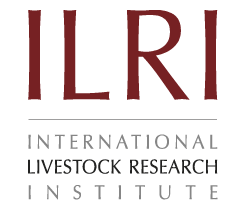Herd Improvement through Community-Based Breeding
Summary
Poor genetics, and diseases are the most limiting factors for improved small ruminant production in Africa. Naturally selected, traditional goats and sheep exhibit useful adaptation to environmental stress and partial resistance to common diseases but are often lower in meat and milk production compared with improved breeds. One of the challenges of breed improvement in traditional smallholder systems is the mixed sex and age herd structure, which makes it difficult to identify and propagate specific male parents. Smallholder farmers usually do not maintain breeding records. This makes tracking genetic progress difficult and increases inbreeding. Attempts to improve the performance of local herds through crossbreeding with exotic breeds offers mixed results because offspring too often lack needed adaptation. These challenges underscore the need for more participatory community-based breeding backstopped by experienced animal technicians.
About the Solution
Heritable traits of interest in goats and sheep include birth weight, daily weight gain, weaning weight, mature weight, milk yield, percentage of twin births, and feed conversion efficiency. The community-based approach to breed improvement builds upon these traits of interest relying upon hardy stock performance. These programs are best established through collaboration between government, community and funding institutions and consists of nucleus and base herds. A nucleus herd contains at least two hundred selected ewes (female sheep) and does (female goats); and 8 to 10 recognizably superior rams (male sheep) or bucks (male goats), although many such programs are much larger, numbering into the thousands. A committee of community members selects the best young rams and bucks. Lead members manage these selected rams and bucks with mating based on phenotypic attributes. This pairing occurs within the base population of the best female stock. Breeding progress is supported through various performance measurements, often relying on ZPLAN software (first developed by the University of Hohenheim, Germany, and now applied to many local breeding efforts). These efforts must then be linked to feeding, health and marketing.
Community-based breeding finds application across the tropics including with swine (in Vietnam), llamas (in Bolivia) and many countries with goats and sheep. Notable success is achieved in Africa with goats (Malawi and Uganda) and sheep (Ethiopia). Efforts are championed in Africa by both the International Center for Agricultural Research in the Dry Areas (ICARDA) and the International Livestock Research Institute (ILRI). An important role of the TAAT Small Livestock Compact and the TAAT Clearinghouse is to incorporate this practical breeding approach into the activities of country projects and within bank loans. Farmers within these programs provide animals with desirable traits to form the nucleus or base herds.
The nucleus herd comprises performance-tested stock. The breeder rams and bucks are assessed for three to five years and then matched with females from the base herd under the supervision of a management committee that breeds animals, arranges payment for breeding services, maintains performance records and monitors housing, feeding, herd health. Where needed, animal scientists provide specialist services related to breed characterization, rotation of breeding males, and data collection, analysis and interpretation of breeding success. Males are typically selected for their size, coat color, growth rate, mating ability and temperment. Females are selected for their appearance, coat color, mothering ability, age at first birthing, birthing intervals, and twining (having more than one offsping at once). Sheep may be further selected for their fleece and goats for their milk.
Starting a program requires that target sites be identified, breeding stock characterized and ranked, and breeding objectives defined based upon different livelihood strategies and economic opportunities. Breeding operations require that elite animals be identified, recording systems be established and data be collected based upon a breeding plan. Maintenance of elite males used for mating is compared to natural breeding within members’ flocks. This approach creates an enabling environment for goat and sheep enterprise that strengthens institutional relations, local cooperatives, and market linkages.
Commercialization
Commercially available
Solution Images
Institutions


